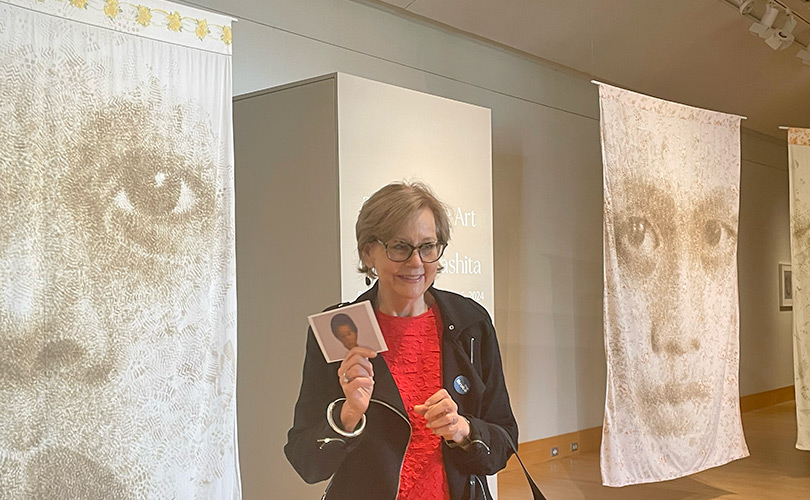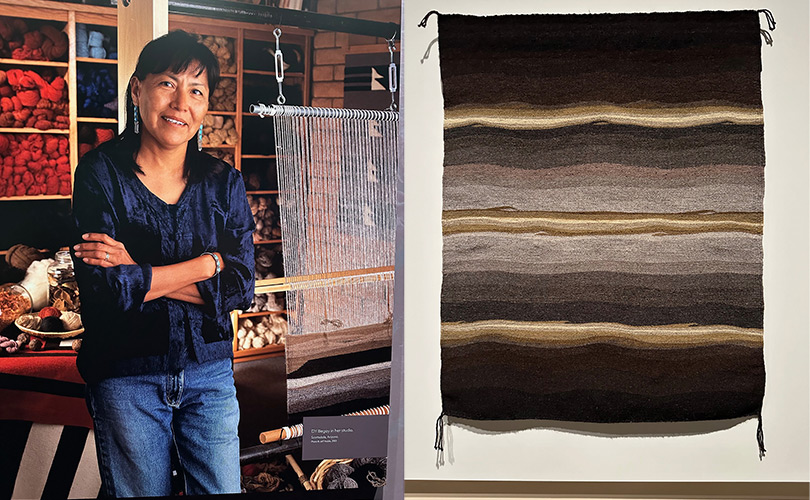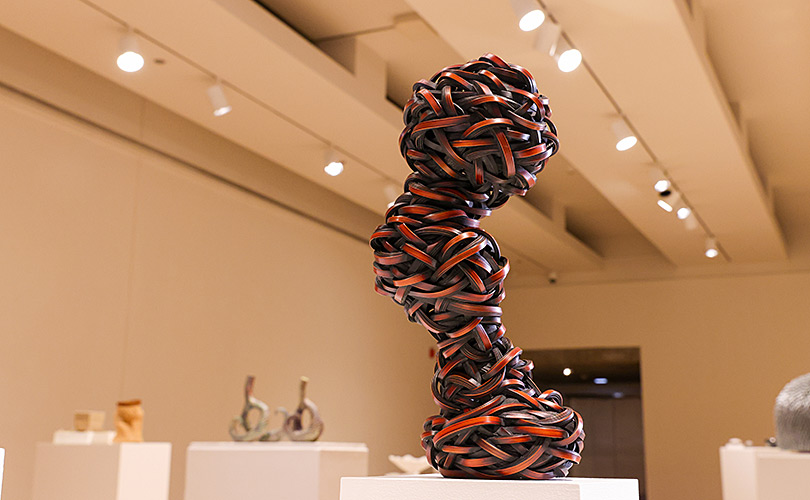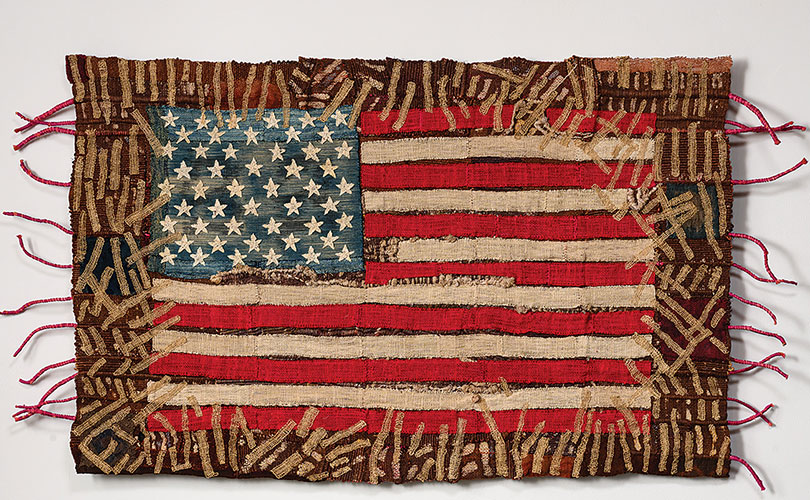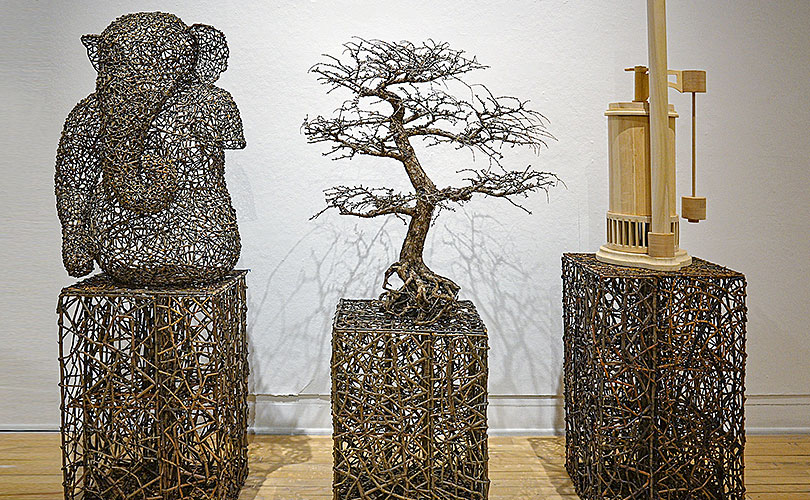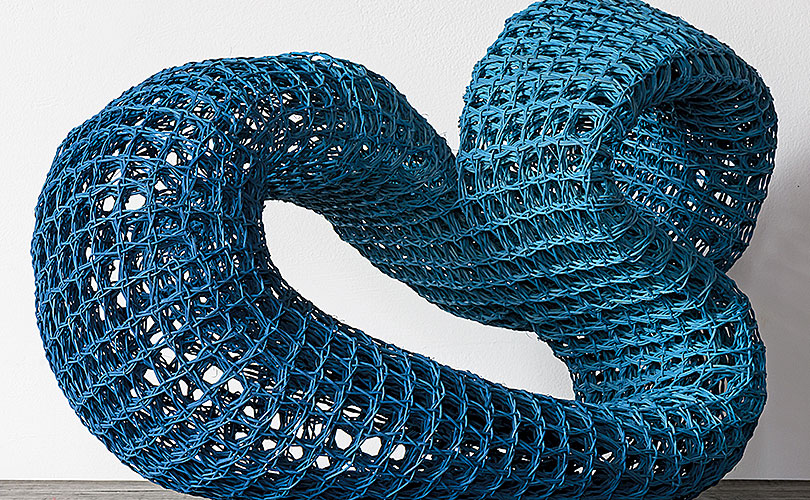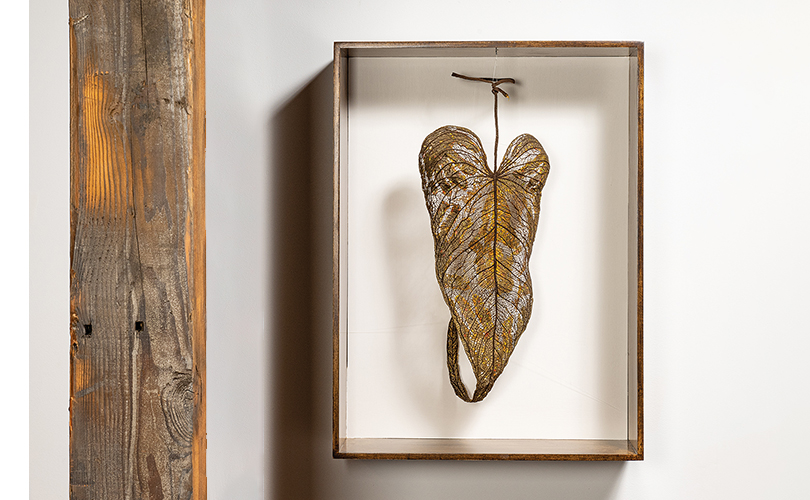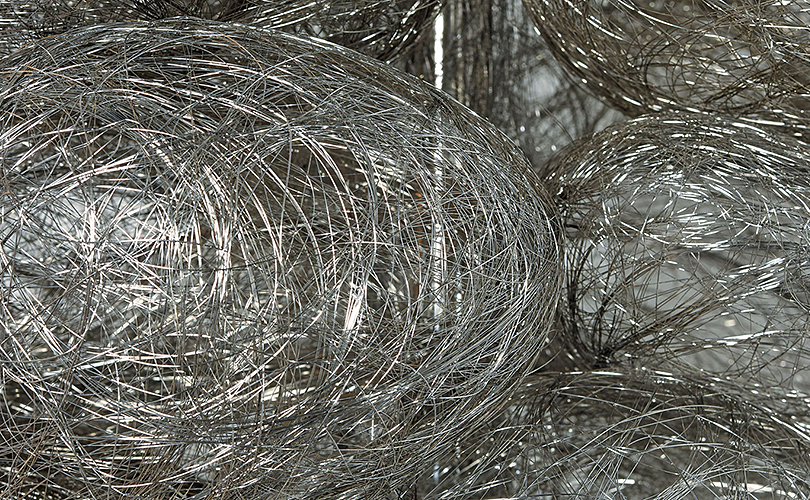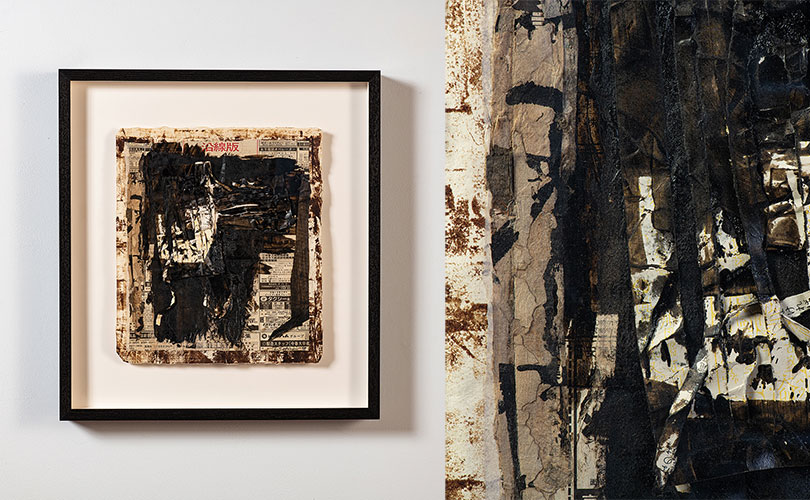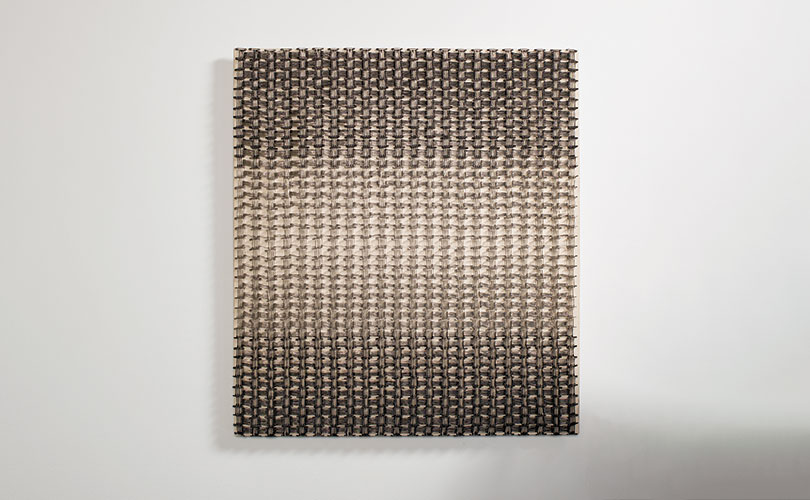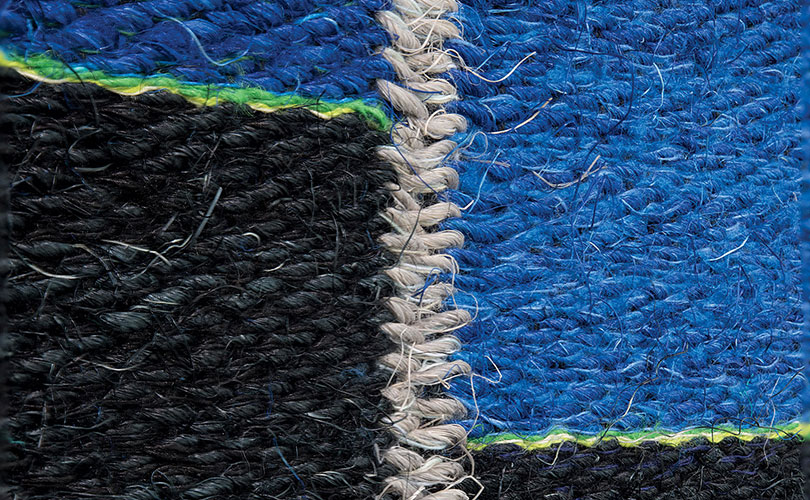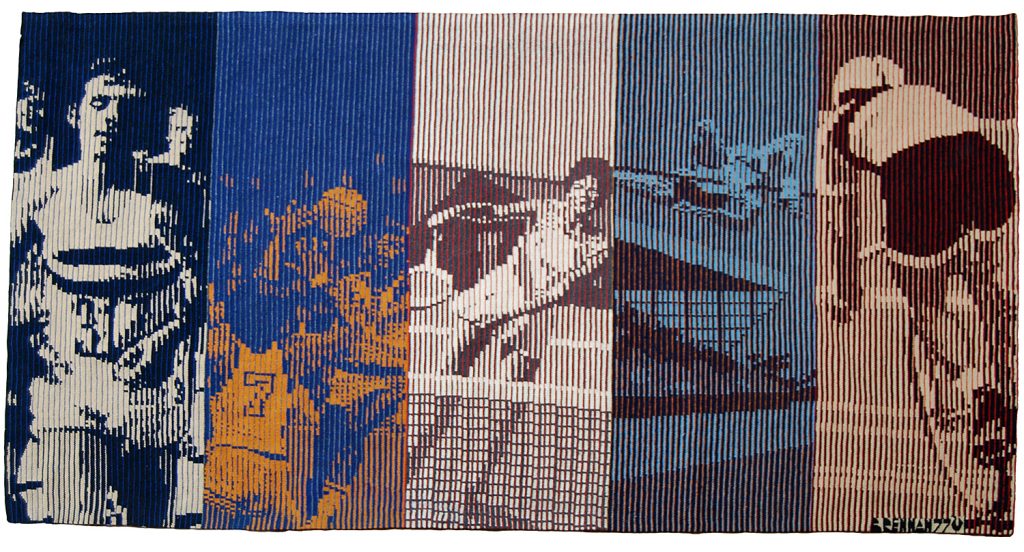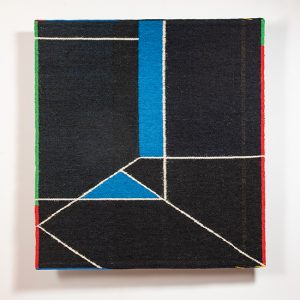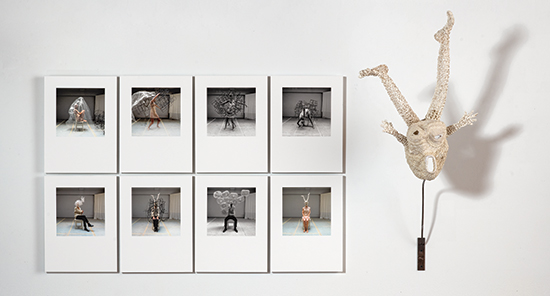We are deep in winter doldrums in the US — devastating fires in the West; plunging temperatures in the East. Art can be a balm and a bright spot. Here we round up some exhibitions of note and share some art news to remind you of the power of creativity.
We’ve already told you about the Sheila Hicks’ exhibition in Germany, Olga D’Amaral’s in France and Japandí Revisited: shared aesthetics and influences, in Wayne, Pennsylvania, which closes this weekend on January 25th at 4 pm after a lecture and reception. Below some notes from the US and abroad:
California
Cut from the Same Cloth: Textiles and Technology
Palo Alto Art Center
through April 6, 2025
250 Hamilton Avenue
Palo Alto, CA 94301

As the Cultural Center observes, “textiles have not only fueled the creative inspiration of artists throughout history, they also have provided the catalyst for technological innovation. Joseph Marie Jacquard, a French merchant, invented the ‘jacquard machine’ in 1801, which simplified the manufacture of textiles and later became the inspiration for IBM’s first computer introduced in the 1940s and 1950s. This exhibition,” which includes Lia Cook, “investigates the many unexplored relationships between craft and technology and demonstrates, through the work of a group of artists, how contemporary art practice has seamlessly embraced both.”
9 x 9: Contemporary Quilts & Containers
Palo Verdes Art Center
January 25 – April 12, 2025
Opening Reception: February 1, 2025, 6 – 9 pm
5504 Crestridge Road
Rancho Palos Verdes, CA 90275

Beginning on the 25th, the Palo Verdes Art Center will showcase artworks by 18 distinguished artists from California’s established fiber art community. The artists, who include Karyl Sisson, Kay Sekimachi, and Carol Shaw-Sutton, will present innovative interpretations of traditional craft forms. “These dynamic quilted, woven, plaited, and twined works investigate the purposes and potential of cross-cultural narratives and techniques through diverse media,” says the Center, “expanding our understanding of visual culture. Material-based, conceptually engaged, and skillfully executed, these artists transform conventional quilting and container-making practices into sophisticated contemporary expressions.”
Denmark
Artapestry7, International Triennial
Kunst Centret Silkeborg Bad
January 25 to April 21, 2025
Gjessøvej 40
8600 Silkeborg, Denmark

This is the seventh time that the organization European Tapestry Forum has sent a juried exhibition of woven tapestries on tour in Europe, and the fourth time that the triennial has been exhibited in Silkeborg. The triennial, which includes work by Gudrun Pagter, Irina Kolesnikova, and Lija Rage, gives the audience a good insight into the current trends among weaving artists. The jury has selected the 37 most beautiful, skillfully executed and most creative tapestries from more than 100 submissions.
Washington, DC
We Gather at the Edge: Contemporary Quilts by Black Women Artists
Renwick Gallery of the Smithsonian American Art Museum
February 21, 2025 – June 22, 2025
1661 Pennsylvania Ave., NW
Washington, DC
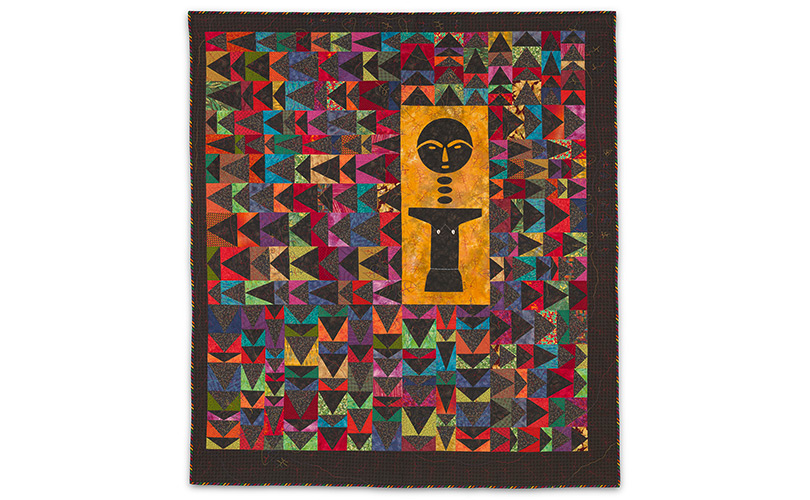
In 1981, the Smithsonian acquired 35 qulits collected by Dr. Carolyn Mazloomi, who holds a doctorate in aerospace engineering, is a prolific artist, curator, and scholar. Dr. Mazloomi founded the African American Quilt Guild of Los Angeles, and then, in 1985, she founded the Women of Color Quilters Network, fulfilling the desire of isolated makers to connect and continue Black textile traditions. The quilts in this exhibition are remarkable in scope and groundbreaking in their representation of Black history and culture as told with needle and thread. “Sometimes the weight of living on this planet as a woman, we have to be reminded of who we are,” Dr. Mazloomi has said. “Quilts help to serve that purpose of reminding women about their power.”
New York
Anne Wilson: The MAD Drawing Room and Errant Behaviors
through May 11, 2025
Museum of Arts and Design
Jerome and Simona Chazen Building
2 Columbus Circle,
New York, New York 10019

Chicago artist, Anne Wilson has created the MAD Drawing Room, where visitors can engage in the beauty and complexity of the artist’s personal archives of lace and openwork textiles through close looking, drawing, or writing. The Drawing Room is inspired by the Davis Street Drawing Room, Wilson’s experimental and participatory art project in Evanston, Ilinois. Within the space, visitors are invited to explore Wilson’s library of art and fiber texts, listen to the playlist of sound sources for her video installation, and draw or write using the materials provided. Wilson’s sound-and-video installation, Errant Behaviors, newly acquired by MAD, plays in the gallery. Its source material of lace and openwork fragments are also on view in The MAD Drawing Room. You can see multiple images and learn more about the MAD Drawing Room on Wilson’s website.
Canada
Dawn MacNutt: Timeless Forms
through April 18, 2025
Mount St. Vincent’s University Gallery
Mount Saint Vincent University
166 Bedford Highway
Halifax, NS
B3M 2J6

This comprehensive retrospective exhibition celebrates Nova Scotia artist Dawn MacNutt. Co-curated by Melanie Colosimo and Emily Falvey, this exhibition showcases MacNutt’s unique approach to weaving, which she transforms into large-scale figurative sculptures that explore themes of human fragility. Accompanying the exhibition is a catalogue featuring essays by the artist herself. Spanning four decades, the exhibition moves from delicate miniatures crafted in silver and copper wire to monumental bronze sculptures cast from woven, local willow branches. Together, these works link traditional craft practices to modern and conceptual sculpture and enrich contemporary perspectives on care and the handmade. Accompanying the exhibition is a book, Timeless Forms, that features essays by the artist herself.
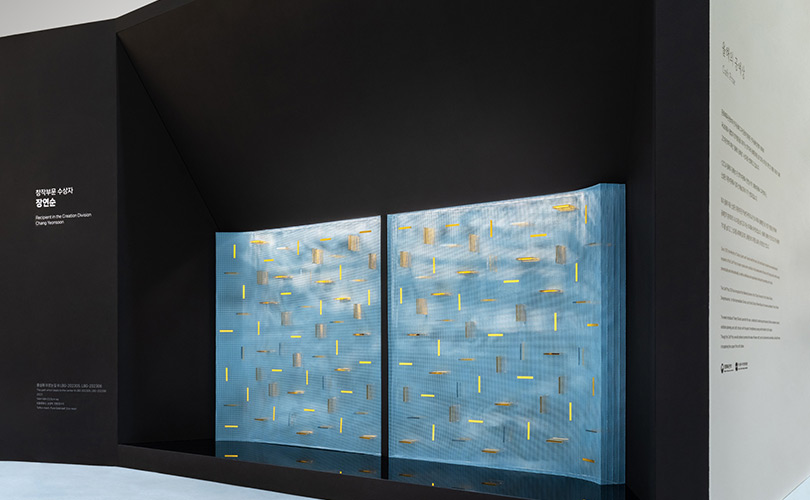
Korea
In the art news department: The Korean Craft and Design Foundation selected Yeonsoon Chang as the winner of its 2024 Creation Division Prize. The artwork in the photo was showcased at this year’s Craft Trend Fair in Seoul in December 2024. It is made of Teflon mesh, pure gold leaf, and eco-resin. “The artist Yeonsoon Chang continues to create works that visualize a unique aesthetic through a Korean sense of beauty, transcending the boundaries of tradition and modernity, time and space, using the properties and structure of textiles,” the Foundation wrote. “Her ongoing dedication has set an example in the craft community and garnered international recognition for the excellence of Korean craftsmanship.”
Receiving the prize has energized and inspired Chang. “For the past nine and a half years since my retirement, I have immersed myself in the study of Eastern classics and the creation of my work,” she wrote on Instagram. “Through this journey, the once-abstract concepts of 空 (Emptiness) and 虛 (Void) have taken on a tangible and experiential reality. I believe the endurance of Korean craft over thousands of years is not solely due to its techniques but to the profound spirit that lies beyond them, deeply woven into its essence. Just days ago, I envisioned slowing the pace of my life to delve deeper into this path, yet now I find myself aboard a high-speed train, unable to control its momentum. Looking ahead, I see my calling as bringing to life the spirit of Korean craft, allowing it to breathe and resonate through my work.”


